#venice preserved
Explore tagged Tumblr posts
Text
bro in my satire class said that interpreting male intimacy in media as nebulous in terms of platonic/romantic/sexual relationships is “a massive generalization” because “sex ruins friendships,” maybe ill just write an essay about menippean satire and the carnivalesque’s upheaval of traditional social dynamics and how that plays into Jaffier and Pierre’s relationship in Venice Preserved. as a treat
#he brought up how he hates when people interpret sam and frodo as gay#like just say you dont want queer representation in your fav media#this was AFTER he was judgy toward women and TEENAGE GIRLS for wearing makeup because ‘men dont care if women wear makeup’#and how women’s bathrooms are always messy and have ‘products and chemicals everywhere’ while men only have ‘a toothbrush and a bar of soap’#major manosphere behavior#jason speaks#venice preserved#thomas otway#satire#british literature#brit lit
3 notes
·
View notes
Text
Floating Houses of Iraq: The Mesopotamian Venice
The enchanting floating houses of Iraq, known as “mudhif,” tell a remarkable story of sustainability and resilience. Often referred to as the Garden of Eden or the Mesopotamian Venice, this unique community, known as the Ma’dan, thrives in the lush wetland areas of southern Iraq, where the Tigris and Euphrates rivers meet. The Craft of Floating Homes These floating homes date back thousands of…
#cultural heritage#cultural history#Eco Architecture#Floating Houses#Historic Curiosities#Iraq History#live in harmony with nature#Ma’dan#Marsh Arabs#Marshes#Mesopotamian Venice#Nature Conservation#Nomadic Lifestyle#Preserve Culture#Reed Houses#Sustainable Architecture#sustainable living#Traditional Housing#Water Based Living
0 notes
Text
જ⁀♡⊹。° stranger, that's all i see
( sae itoshi x fem! reader )
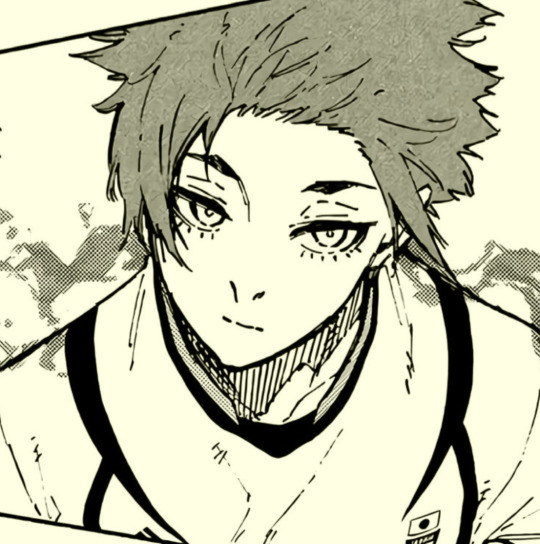

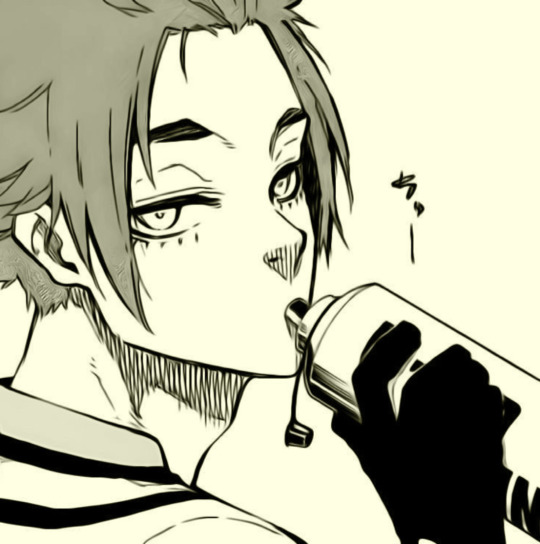
♡ a/n — the 7th ( and last ) part to my seven petals, all poison series! ( masterlist )
♡ word count — 1.8k
♡ content — sae itoshi x fem! reader , sae and reader are 30-31 ish , established relationship ( married ), divorce hinted at ( and said toward the end ), one sided relationship, sae falling out of love with reader, harsh sae, tbh idk what else to add :), not proofread!
♡ synopsis — Ten years ago, you fell in love with a rising star in Spain. A whirlwind romance, a quiet wedding, a promise of forever. But forever is starting to feel like a one-sided vow. Sae Itoshi still wears his ring—but the space beside you in bed stays cold. And love, as it turns out, doesn’t survive on silence.
── .✦ when i look into your eyes, a soulmate who wasn't meant to be

You used to think silence was romantic.
In the beginning, there was something beautiful about sitting next to him in a café with nothing to say, yet feeling everything. Fingers lightly brushing over ceramic coffee mugs, eyes meeting across the table, your knee barely grazing his under the small table.
You always thought he was a storm kept still just for you. Even his quiet held weight, meaning.
But now?
Silence is a weight you carry alone.
You stare at the seat across from you—his seat. Your fork scrapes across porcelain as you push asparagus and roasted chicken around your plate, untouched.
Another dinner alone.
Another meal you plated with too much hope.
You still try, out of habit.
You’ve been trying for ten years.
Your eyes flick to the digital clock on the oven.
9:47 PM.
You used to wait.
Now, you just clean up.
You met him in Madrid, fresh out of university, wide-eyed and brilliant with a pen.
You were a translator at first, then a sideline reporter, and then a full-on broadcaster with glowing reviews. Your Spanish lilted and playful, your insight sharp.
You caught his eye with the way you didn’t flinch at his silence. How you challenged him, even when others backed away.
Sae Itoshi was the prodigy.
You were just...you.
He said he liked your honesty. You liked his contradictions. He was all ice, but when he touched you, he burned.
You dated for a year. Engaged the next. Married the one after that. It was fast, but it made sense. You were both dreamers in your own ways. He had a career that stole him from the world. You had a world you were willing to shrink, just to stay in his orbit.
At twenty-four, you thought love was enough.
You’ve grown into a different version of yourself—your thirties are here. Your friends are planning holidays with their kids, attending parent-teacher nights, adopting dogs they name after old musicians.
You show up to everything alone.
“Oh, where’s Sae?”
You used to smile and say, “Training.”
Now, you sip your drink and shrug. “You know him.”
Because you do know him. Or at least, you did.
But that version of him—the boy who kissed you in your rain-wet hallway after a win, the man who promised you Venice and three kids and a house with a garden—is gone.
Or maybe he never existed outside the breathless version of him you imagined in your twenties.
When the season ends, he’s home more. Kind of. You wake up to the sound of him showering. You hear him shuffle around the kitchen, pouring cereal, never coffee. He leaves the bowls in the sink.
He doesn’t ask how you are. He doesn’t notice the way your hand lingers on the fridge, or how your eyes are always just a little too glassy.
It’s not cruel. It’s just...empty. And that hurts more.
The house is quiet—too quiet for something so big. The kind of silence that fills your chest like smoke and refuses to leave.
You stand in the living room with your arms crossed, staring up at the one thing in this house that still feels alive.
A portrait.
Large and centered above the fireplace, preserved like a shrine: your wedding photo.
You don’t even know how long you’ve been standing there, just looking at it. But time doesn’t matter. Not in this house. Not anymore.
You, in that dress you spent weeks hunting for—a soft ivory with a dramatic, low back and a train that shimmered every time you moved. You remember how the lace felt under your fingertips. How your cheeks hurt from smiling too much. How your mother cried when she buttoned you in.
And Sae—
Sae looked at you like you were the only real thing in the world. His hand was at your waist, his mouth pressed against your temple, and the corner of his lips lifted just slightly in a way no one else ever saw.
You remember everything. The flowers you picked out together. The laughter that rang through the courtyard when your uncle accidentally tripped on the runner. The music—God, the music—you two danced to that soft jazz track he liked. He didn’t even want a first dance until he saw how badly you did.
Your fingers tremble as they drift to the ring on your hand.
You twist it, slowly.
You remember the way his thumb brushed over your knuckles when he slid it on. “You sure about this?” he asked, and you’d smiled, breathless. “Always.”
That girl is a ghost now. Her voice lives only in your memories.
You feel your throat tighten.
Then— A voice, sharp and cold, cuts through the haze:
“What are you staring at?”
You jump, heart in your throat.
Sae stands at the doorway, a duffel bag slung over his shoulder. He’s home earlier than usual. His hair still wet from a shower, his jersey only half-tucked into black sweats.
He looks tired. He always does now.
And the worst part is—he doesn’t even try to look at you.
You swallow the lump forming. “Oh. Just our… our picture.”
You smile, soft and nostalgic, still twisting the ring like a habit you can’t break.
“Oh.”
He looks up at it.
His expression doesn’t change. Blank. Like the photo means nothing.
“We need to take that down.”
He says it like he’s mentioning the weather. Like he’s telling you the laundry’s done. Then he walks off into the kitchen, door swinging behind him.
That’s it. The first conversation you’ve had in weeks.
Just seven words. And not one of them about you.
You stay there for a while longer, staring at the photo. At the girl who thought promises meant permanence. At the man who once looked at her like she hung the moon.
You fight for the first time in weeks one morning, over something stupid.
“You said we’d go visit my parents,” you remind him. “They’ve been asking.”
“I have meetings,” he replies, not even looking up from his phone. “You can go.”
“I don’t want to go alone, Sae.”
He finally looks up, brow slightly knit. “Why not?”
You nearly laugh. It’s not funny, but it is—it’s hilarious how little he sees you these days.
“Do you ever want to do anything with me?” Your voice wobbles.
“What kind of question is that?”
You blink. “An honest one.”
He sighs and rubs the bridge of his nose. “You’re being dramatic.”
There it is.
The sentence that breaks you. Not because it’s harsh. But because it’s indifferent.
You leave the room before he sees your tears.
You have the conversation one night in bed.
You can’t sleep, and his breathing is slow beside you, too far on the edge of the mattress.
“You know I wanted a family,” you whisper into the dark.
He’s silent for so long, you think he’s asleep. Then—
“I never asked you to stay.”
It’s a knife without sharpness. A dull blade. And somehow, that makes it worse.
Your breath hitches. “Is that what I’ve been doing? Staying?”
He doesn’t answer.
Because he knows.
And so do you.
The day you leave, he doesn’t fight. Not really.
He just watches you pack a small suitcase. You leave the rest. You leave the house.
You leave the life you waited too long for.
But before you walk out the door, you turn to him. He stands in the doorway, arms crossed, still wearing the shirt you folded for him yesterday.
“I loved you so much, Sae.”
He looks at you like he almost believes you didn’t. “You still do.”
You nod. “Yeah. And that’s the saddest part.”
It’s raining when you step into the cab. Of course it is.
But for the first time in years, the silence inside you starts to sound like peace.
Not absence.
Just...quiet.
The apartment you live in now is smaller. There’s no grand foyer. No marble countertops or a view of the city skyline through floor-to-ceiling windows. Just one bedroom, a couch you picked out by yourself, and a kitchen with mismatched plates and mugs.
It’s quiet here, too.
But not the kind of quiet that swallows you whole.
This one... this quiet lets you breathe.
Still, some mornings are harder than others.
You’re sitting at your kitchen table, the rim of your coffee cup pressed to your lips but untouched.
Your phone buzzes, face-down on the wood. You ignore it.
You’ve gotten good at that. Letting people reach for you without having to reach back.
But something nags at you. So you flip the phone over.
A headline lights up the screen.
“Sae Itoshi: Better and Better, Even After Divorce.”
At 32, Japan’s prodigal midfielder is aging like fine wine—and nothing seems to slow him down.
Your stomach drops before you can stop it.
The article auto-loads, as if your phone already knew you’d read it.
There’s a photo. He’s on the field in a sharp navy kit. His hair longer than you remember. Still unreadable. Still beautiful in that cold, impossible way.
You skim, even when you don’t want to:
“After a decade at the top, Itoshi continues to impress. His stats have only improved, his stamina unshakable. When asked about his divorce that happened a year ago, the midfielder declined to comment, simply stating, ‘My focus is football.’”
Of course it is.
You set the phone down slowly.
He’s still shining. Maybe brighter than before. And not a single thing has changed.
No stumble. No pause. Just a chapter closed, and a new one opened without you.
You, though?
You left with nothing but your name.
No shared bank accounts.
No alimony.
No custody battles—there was nothing to fight over.
Not even a goldfish to argue about.
You walked away with your clothes, your pride, and a ring in the bottom of a drawer.
And somehow, you’re the one mourning.
Not the man he is now. You don’t even know him.
You mourn the boy who whispered “I love you” in a chapel under Spanish stars.
The man who once kissed your hand like it was sacred.
The version of him who looked at you like you were the only thing he’d ever wanted.
Not the stranger who took his place.
And still—
Still, when it rains, you think of him.
Still, when you cook too much food, you instinctively plate two servings.
Still, when the crowd cheers on your TV and they zoom in on him—jaw tight, eyes ruthless, chest rising beneath that number ten—you feel something tug deep in your ribs.
You press the phone face-down again, like it’ll help the ache go away.
The coffee’s cold now, but you drink it anyway.
Because you’re still learning how to live without someone who’s very much alive.
Because some love doesn’t die with divorce.
It just turns into something you have to shove down til it disappears.

ohhh sae you stupid, stupid man
well, that's the end of this series!! I hope you all enjoyed it!
likes, comments, and reblogs are appreciated!!
❀ tags: ❀ @kenyuukissme ❀ @irethepotato ❀ @kiyy0mei ❀ @x3nafix ❀ @sugacor3 ❀ @ohagiyo ❀ @reigensuperstar ❀ @nevvynevnev ❀ join the taglist here !
❀ tags for this series: ❀ @silverwings920 ❀ @anqelkoz
⋆.˚✮ 2025 ©airybcby ✮˚.⋆
#★ · airybcbyy#airy posts#blue lock#bllk#bllk x reader#bllk sae#sae itoshi x reader#sae itoshi#itoshi sae#blue lock x reader#blue lock sae#bllk sae itoshi#sae angst#sae x reader angst#itoshi sae x reader#airy's series!#airys series: seven petals all poison
248 notes
·
View notes
Text
ohhh my god i just realized something.
in the amc version louis says armands blood tastes like pineapple and honey and i was like??? ok? because vampires dont like eating human food it tastes like paste so i found it hard to believe that armand would eat pineapple and honey just for louis
but then i came to a realization. what if armands blood tastes the same way as it did 500 years ago as it did in venice when he ate fruits everyday. and being turned into a vampire just preserved that.
#the vampire chronicles#iwtv#armand#interview with the vampire#the vampire armand#iwtv amc#im reading too much into this
72 notes
·
View notes
Text
Just saw the teaser of Jasper from The Talamasca, and him watching Daniel only continues to prove my theory that he’s Marius.
I recall someone mentioning that in Blood and Gold (correct me if i’m wrong, I haven’t read it) Marius, Mael and Avicus are referred to as the 3 biblical Magi, one of whom is named Caspar… or Jasper, and this seems to be a major theme, especially with Marius giving out gifts of gold.
Now in TVA, which I have read, Marius is also quite openly giving out gold to the boys in the Palazzo. He is also described as having the hair of, and resembling young Lorenzo de Medici “right from the painted wall”.
That is referring to the Procession of the Magi, which is a mural depicting Lorenzo de Medici in the guise of the Magus Jasper.
Marius was described to appear more “icy” than Lestat, such as his cobalt blue eyes. It wouldn’t be a stretch for Marius to have white hair instead of a platinum-blond type of color too.
As for his age, while he’s supposed to appear to be in his 40s, I believe they’re going to make him (if he isn’t already) the old man in the beginning of TVA who paid to sleep (literally, not to have sex) with Armand on their way to Venice.
I think him being that old man would also make sense of why Armand saw Marius as a savior when he bought him later on, and why he sensed that the old man—while not having sex with him— “regarded him as something quite valuable, to be preserved for sale.”
Armand also goes on to say “I thought I was a being kept by him like a fatted calf to be sold for food.”
Also,
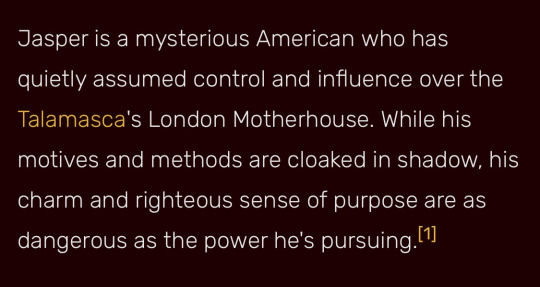
This description sounds just like him.
I also know there’s a theory about Raglan James being Marius and not Jasper, but I think it’s possible that if Daniel is really going to be taking over David Talbot’s character, that Justin Kirk may play Daniel in the future, since
1. Daniel is a dying old man who has been refusing to become a vampire, and David was also originally a dying old man who refused to become a vampire despite the offers he was given.
2. To me he kind of looks like how Daniel is described in the books. This would also allow them to skip over David taking over the body of an Indian man. (or he may briefly switch bodies with Rashid, we don’t know, but now it would be possible for him to not be in that position for too long)
3. Switching bodies with Daniel would allow him to get to Lestat
I haven’t quite figured out the specifics though, and I’m not 100% confident in either of these theories but I thought it might open up a fun conversation!
#iwtv#interview with the vampire#amc iwtv#daniel molloy#marius de romanus#raglan james#david talbot#the talamasca#amc talamasca#talamasca
42 notes
·
View notes
Text
How trivial all his bitterness seemed; he thought of this one whose existence had been for centuries unbroken suffering; whose youth with all its needs had been rendered truly eternal; this one whom he had failed to save, or to perfect. How many times over the years had he dreamed of such a reunion, and he had never had the courage for it; and now on this battlefield, in this time of ruin and upheaval, they were at last to meet. “My love,” he whispered. He felt himself chastened suddenly as he had been earlier when he had flown up and up over the snowy wastes past the realm of the indifferent clouds. Never had he spoken words more heartfelt. “My beautiful Amadeo,” he said. And reaching out he felt the touch of Armand’s hand. Supple still this unnatural flesh, supple as if it were human, and cool and so soft. He couldn’t help himself now. He was weeping. He opened his eyes to see the boyish figure standing before him. Oh, such an expression. So accepting, so yielding. Then he opened his arms. Centuries ago in a palazzo in Venice, he had tried to capture in imperishable pigment the quality of this love. What had been its lesson? That in all the world no two souls contain the same secret, the same gift of devotion or abandon; that in a common child, a wounded child, he had found a blending of sadness and simple grace that would forever break his heart? This one had understood him! This one had loved him as no other ever had. Through his tears he saw no recrimination for the grand experiment that had gone wrong. He saw the face that he had painted, now darkened slightly with the thing we naively call wisdom; and he saw the same love he had counted upon so totally in those lost nights. If only there were time, time to seek the quiet of the forest—some warm, secluded place among the soaring redwoods—and there talk together by the hour through long unhurried nights. But the others waited; and so these moments were all the more precious, and all the more sad. He tightened his arms around Armand. He kissed Armand’s lips, and his long loose vagabond hair. He ran his hand covetously over Armand’s shoulders. He looked at the slim white hand he held in his own. Every detail he had sought to preserve forever on canvas; every detail he had certainly preserved in death.
Marius and Armand's reunion, The Queen of the Damned by Anne Rice
#anne rice#the vampire chronicles#vampire chronicles#tvc#armand#the vampire armand#marius de romanus#marius/armand#the queen of the damned#tvc quotes
53 notes
·
View notes
Text

After the fall of Constantinople, Anna Notaras (d. 1507) gathered a community around her, preserving Greek culture and spreading it in ways that profoundly influenced the Italian Renaissance.
Exile from Constantinople
Anna was born into a wealthy and prestigious family. Her father, Loukas Notaras, was an influential statesman who served as mesazon (prime minister) to the last two Byzantine emperors and held the title of megas doux (Grand Duke and commander of the navy). Her mother was from the imperial Palaiologos family, which allowed Anna to use the family name Palaiologina.
It’s possible Anna was once considered as a prospective bride for the last Byzantine emperor, Constantine XI. However, she was never officially betrothed to him and certainly never became his wife, contrary to later erroneous claims.
Sometime before 1453, Anna and her sisters, Theodora and Euphrosyne, were sent away from Constantinople, which spared them from witnessing the city’s fall during the Ottoman siege. Sultan Mehmed II executed her father and brothers, sparing only her brother Jacob.
Now in exile, Anna settled in Italy with the ample fortune from father’s bank accounts.
A Vision for a Greek Colony
By 1472, Anna had a plan: she sought to establish a Greek colony on Italian soil. She sent a delegation to Siena and received a warm welcome. A draft agreement was drawn up, deciding that the castle of Montauto in the Maremma should be handed to Anna. She was to become the rallying point of a community of 100 Greek families.
However, the project never materialized. Likely, Anna realized the land and the ruined castle were unsuitable for such a plan. By 1475, she had relocated to Venice.
A Patron of Culture
An independent woman, Anna never married, nor did she become a nun since there was no Orthodox convent she could join. Respected, wealthy, and influential, she became a prominent spokeswoman for Venice’s rapidly growing Greek community. She convinced the authorities to allow her to build an oratory in her home so the Orthodox liturgy could be celebrated in Greek.
Anna also emerged as a key cultural patron. She owned a library and supported the first dedicated Greek printing press. In 1499, her name appeared in the first book it produced: the Etymologicum Magnum. The dissemination of Greek philosophy, scholarship and litterature would influence the Italian renaissance.
Anna passed away on July 8, 1507, after a long and eventful life.
Anna’s dream of an Orthodox church in Venice was realized 30 years after her death. Among her possessions were magnificent icons brought from Constantinople; three of them are now preserved in the church of San Giorgio dei Greci.
Enjoyed this post? You can support me on Ko-fi!
Further reading
Nicol Donald M., The Byzantine Lady: Ten Portraits, 1250–1500
Nottara Paltin, Anna Notaras, la dernière Byzantine
Philippides Marios, Constantine XI Dragaš Palaeologus (1404-1453): The Last Emperor of Byzantium
#anna notaras#history#women in history#women's history#historyedit#15th century#byzantine empire#byzantine history#historyblr#venice
62 notes
·
View notes
Text
Heritage News of the Week
Discoveries!
Bite marks from a lion on a man’s skeleton, excavated from a 1,800-year-old cemetery on the outskirts of York, provide the first physical evidence of human-animal combat in the Roman empire, new research claims.
Tomb of ancient Egyptian prince discovered at Saqqara — and it has a giant 'false' pink door
The tomb belongs to Prince Userefre, also spelled Waser-If-Re, the son of King Userkaf, also spelled Wserkaf a pharaoh who reigned around 2465 to 2458 B.C. during Egypt's fifth dynasty (circa 2465 to 2323 B.C.).
Archaeologists 'confident' destroyed monastery site found
Archaeologists believe they have found the site of a 12th Century monastery near Downpatrick, County Down, that was destroyed in 1177 by the Anglo-Norman knight John de Courcy.
Volunteers find ancient Mayan pottery in an extensive cave system in Mexico
Archaeologists in Mexico have discovered ancient Mayan pottery in a cave system a little more than 10 miles away from downtown Playa de Carmen.
Roman horse cemetery unearthed in Germany
Archaeologists have discovered the skeletons of more than 100 horses near the site of a Roman fort in Germany's southern state of Baden-Württemberg.
Letter reveals Shakespeare did not abandon his wife
An examination of a fragment of a letter, which is addressed to "good Mrs Shakespeare", appears to show they did live together in central London between 1600 and 1610.
Mysterious medieval cemetery near Cardiff Airport reveals secrets of women, wealth, and odd burials
A medieval cemetery discovered in Wales is continuing to baffle archaeologists, revealing a community of women buried with signs of wealth, including a mysterious outcast thrown into a ditch.
5,000-year-old burial of elite woman with inlaid toucan's beak found in Peru
The woman lived sometime between 3000 and 1800 B.C., and her well-preserved body was found in the ruins of the ancient town of Aspero, which is located in western Peru.
Iron Age necropolis uncovered in Abu Dhabi
Archaeologists from the Department of Culture and Tourism Abu Dhabi have unearthed a 3,000-year-old necropolis near the Al Ain region's Qattara oasis. Researchers think there are more than 100 graves at the site, making it the first major Iron Age cemetery to have been found in the United Arab Emirates.
Ancient Cretans ‘killed’ their tombs in symbolic feasts 4,000 years ago
Researchers studied the Sissi cemetery, where around 3,800 years ago, the local community gathered in a symbolic and carefully orchestrated ceremony to “kill” their collective tombs. This act was not one of vandalism or neglect but rather a public ritual that signified the end of an epoch shaped by centuries of communal burial traditions that had defined Cretan life.
Archaeologists find wreck of large medieval boat in Barcelona
Archaeologists excavating the site of a former fish market in Barcelona have uncovered the remains of a large medieval boat that was swallowed by the waters off the Catalan capital 500 or 600 years ago.
'Exceptional' archaeological finds on Scottish Highland golf course
The digs, conducted by Avon Archaeology Highland, revealed at least 25 prehistoric wooden buildings alongside artifacts such as flint tools, quern stones, and a rare prehistoric chariot wheel. The remains of Neolithic wooden buildings, a prehistoric ceremonial circle, a 3500-year-old Bronze Age cremation urn, and evidence for medieval field systems and grain-drying kilns were all found on site.
Thetford hoard: evidence of continued paganism in East Anglia until the 5th century
Recent discoveries from a treasure hoard unearthed in Thetford Forest, East Anglia, reveal compelling evidence that the region remained pagan until the 5th century CE, a significant extension beyond the previously established timeline of the late 4th century.
Centuries-old mural hidden in an apartment block in Venice gets a new lease on life
The painting is a rare example of decorative art that once adorned facades throughout the Floating City.
Possible location of medieval knight Zbylut’s manor identified alongside discovery of unknown burial crypts
Researchers have uncovered previously unknown burial crypts within the Gothic Church of St. James the Apostle in Prusice, a small town near Wrocław, Poland.
Most Phoenicians did not come from the land of Canaan, challenging historical assumptions
a new study of hundreds of ancient genomes finds that, although Phoenician culture and language may have originated in the land of Canaan, most Phoenician people did not.
Climate shift may have spurred the Neolithic revolution
Researchers led by geologist Amos Frumkin have identified environmental evidence of a natural climate shift in the region some 8,200 years ago. This altered landscape, the researchers posit, likely spurred foragers throughout the Levant to settle in fertile valleys and domesticate plants by farming.
Study reveals Córdoba’s advanced sanitation system
Recent research has unveiled the impressive sanitation systems of medieval Córdoba, revealing that the city’s infrastructure was so advanced that it would not be matched in Europe until the twentieth century.
Museums
In a timely Instagram post, the Crab Museum pointed to the April 16 ruling establishing that the “concept of sex is binary” as outlined under the Equality Act of 2010, drawing attention to the judgement’s statement that the biological characteristics that delineate man from woman “are assumed to be self-explanatory and to require no further explanation.”
The crab museum continues to be awesome
Rare Iron Age textile to go on display for first time
The piece of fine woven yarn is almost 2,500 years old and dates back to the early to middle part of the Iron Age.

China’s Terracotta Warriors make their way to the U.S. for a rare museum showcase
The show brings together 110 newly discovered archaeological treasures from Shaanxi, including Terracotta Warriors, bronze vessels, chariot regalia, and other jade and gold artifacts.
Lego display marks 200 years since Roman discovery
The Corinium Museum, in Cirencester, launched its Brickus Orpheus Trail on 15 April, which is part of the Project Orpheus partnership event between the museum, the Barn Theatre, and New Brewery Arts. Organised to mark the 200th anniversary of the discovery of the Orpheus mosaic at Barton Farm in Cirencester, the event will run until 2 November.

Metropolitan Museum of Art director Max Hollein says Trump anti-DEI push ‘doesn’t apply to us’
The Metropolitan Museum of Art director Max Hollein told French art publication Le Quotidien de l’Art in a recent interview that the Trump Administration’s recent push to eliminate Diversity, Equity, and Inclusion programs will have no effect on the venerable institution.
66% of Americans don’t think Trump should control museums
Two thirds of Americans disagree that the president should control national museums and theaters, according to the results of a recent Reuters/Ipsos poll.
Repatriation
The Museum of Fine Arts, Boston will close its Benin Kingdom Gallery on 28 April, but most of the works it had been created to display will not be repatriated to their place of origin. Instead, all but five of the objects will be returned to their donor, the filmmaker and banking heir Robert Owen Lehman.
Switzerland’s Bührle Foundation reaches settlement with heirs of Jewish collector who owned prized Manet
The foundation that oversees the Emil G. Bührle collection said Wednesday that it had reached a settlement with the heirs of a Jewish collector over a prized Édouard Manet painting.
Judge orders the Art Institute of Chicago to restitute Nazi-looted Schiele drawing
A New York judge ruled on Wednesday (23 April) that the Art Institute of Chicago (AIC) must return a Nazi-looted Egon Schiele drawing, the latest development in a yearslong battle between the museum and the Manhattan District Attorney’s Office.
Heritage at risk
Senior officials say tens of thousands of artefacts were either destroyed or shipped off to be sold during the time the RSF was in control of central Khartoum, where the museum is situated.
Two new arrests in Drents Museum heist, But ancient Romanian gold artifacts remain missing
Dutch police recently arrested two more suspects in connection with the theft of Romanian artifacts from the Drents Museum in Assen, the Netherlands earlier this year in January.
CMA: Indigenous Council statement to the Hudson’s Bay Company
The Indigenous Council of the Canadian Museums Association (CMA) has sent a letter to the Hudson's Bay Company (HBC) regarding its recent decision to auction off its corporately owned art and historical artifacts collection. The letter invited the HBC to consider its long and influential history and consider how its operations were intrinsically linked to Indigenous communities. These connections, while foundational to trade and the exchange of knowledge, were also marred by significant imbalances and injustices. The statement highlights the formalization of these relationships through various agreements and treaties, including early trade alliances, the Douglas Treaties and the 1670 Royal Charter and how they relate to modern day responsibilities. The letter highlights the importance of considering the sale of their collection against Indigenous inherent rights & treaty obligations, the directives of the United Nations Declaration on Indigenous Peoples (UNDRIP) and relevant Canadian law, the Cultural Property Export & Import Act, as well as the Truth and Reconciliation Commission Call to Action no. 92 on Business and Reconciliation.
Odds and ends
In a historical spat that could be subtitled “1066 with knobs on”, two medieval experts are engaged in a battle over how many male genitalia are embroidered into the Bayeux tapestry. The Oxford professor George Garnett drew worldwide interest six years ago when he announced he had totted up 93 penises stitched into the embroidered account of the Norman conquest of England. According to Garnett, 88 of the male appendages are attached to horses and the remainder to human figures. Now, the historian and Bayeux tapestry scholar Dr Christopher Monk – known as the Medieval Monk – believes he has found a 94th.

Dagger or dick, you be the judge!
Darwin's documentary archive recognised by Unesco
An archive of works by the scientist Charles Darwin has been recognised by the United Nations for its importance to global science and the need to preserve it.
Listen to some of the world’s most iconic sites with Sonic Heritage
A new project, Sonic Heritage, is here to change the way we experience the world’s most iconic locations. Launched on World Heritage Day last week, it’s the first-ever global collection of soundscapes from UNESCO World Heritage sites and items of intangible cultural heritage. In total: 270 recordings from 68 countries — ranging from rustling leaves in the ancient city of Tikal to the high-pitched chatter of bats in India’s Ellora caves.
Oxford academics drank from cup made from human skull, book reveals
Decades-long use of chalice at Worcester College highlights violent colonial history of looted human remains, says Prof Dan Hicks
As you do
Warhol print accidentally thrown away by Dutch town hall
A Dutch town hall has admitted that it "most likely" accidentally disposed of 46 artworks, including an Andy Warhol print of the former Dutch queen, during renovation works last year.

The overlooked masterpiece full of coded messages about World War One
Esoteric and pioneering, the paintings of a lesser-known Pre-Raphaelite, Evelyn De Morgan, explored the trauma and meaning of war – and prefigured current fantasy art.
Agathe Snow: Curiously Civilized, Old Rock Creations, Childproof, Easter Island, Stonehenge
The Guggenheim has plushie monuments!

Dinosaur fossils are disappearing into private hands—and it’s hindering science, study finds
The numbers are clear. There are 71 T. rex fossils that are privately held compared to only 61 in public trusts. It’s a discrepancy that seems likely to exacerbate further given commercial companies uncover fossils at twice the rate of museums and only 11 percent of commercially collected fossils have ended up in public trusts. With commercial outfits predominantly in Montana, Wyoming, and the Dakotas often selling to the highest bidder, many T. rex specimens are leaving the U.S. altogether (18 at the most recent count).
#heritage news of the week#for some reason heritage daily will no longer allow copying or even right clicking#so I guess we're not using them anymore#:(#history#art#paleontology#museums#archaeology#gif
24 notes
·
View notes
Text
Pavlo Makov, master of etching and creator of utopian worlds
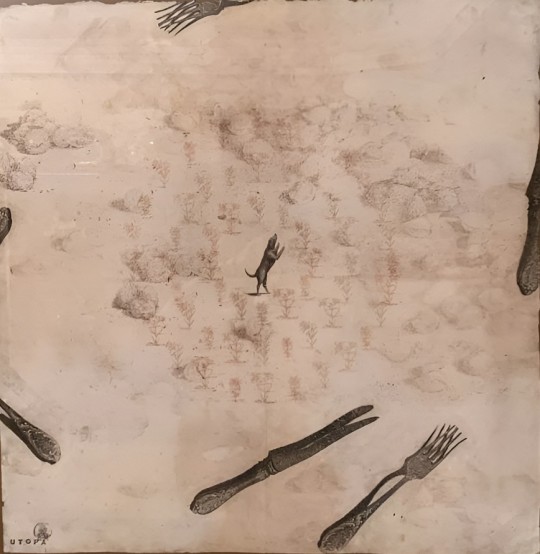
Pavlo Makov, a Ukrainian artist born in 1958, is widely regarded as a master of etching, a technique he has elevated into a profound medium for crafting utopian worlds. With a career spanning decades, Makov has developed a distinctive style that blends meticulous printmaking with imaginative storytelling, drawing viewers into intricate landscapes that hover between reality and fantasy. His works, often rooted in his experiences in Kharkiv, reflect a deep engagement with themes of place, memory, and societal exhaustion, earning him international acclaim, including membership in the Royal Society of Painters and Graphic Artists of Great Britain.
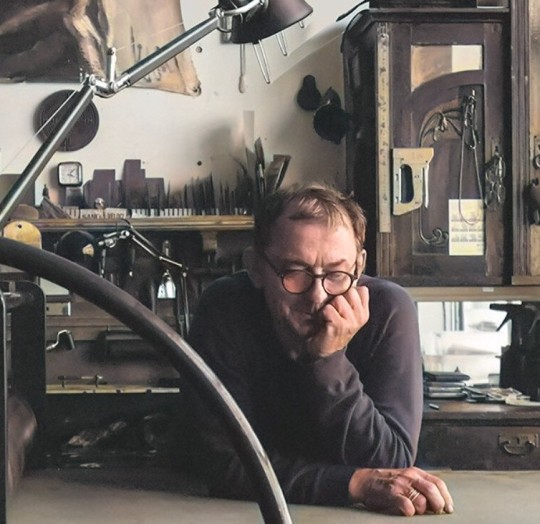
Makov’s creative process is as unique as his vision. Rejecting mass production, he labors over each etching, using an etching press to transform his drawings into singular, layered compositions. Projects like Utopia, Gardens, and Book of Days showcase his ability to construct "macro-worlds" and "micro-worlds," where every detail invites exploration. His innovative approach extends to artist’s books, where text and image intertwine, offering a deeper plunge into his constructed realities—worlds that feel both familiar and otherworldly, shaped by his observations of Ukraine’s shifting cultural and physical landscapes.

Perhaps most notably, Makov represented Ukraine at the 2022 Venice Biennale with his installation Fountain of Exhaustion: Aqua Alta, a sculptural work symbolizing depletion on personal and global scales. Conceived in the 1990s and updated amid conflict, this piece—featuring water trickling through bronze funnels—mirrors the fragility and resilience he sees in the world. Despite war disrupting his plans, Makov’s art persists as an act of resistance and reflection, cementing his legacy as a creator of utopian realms that challenge and captivate, preserved in prestigious collections like the Victoria and Albert Museum and the State Tretyakov Gallery.
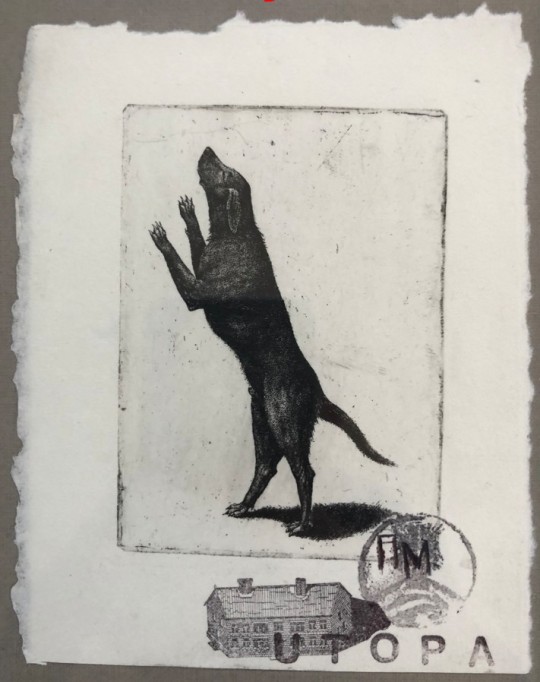
More of Pavlo Makov's works can be found in Kobzar Art Gallery
#ukrainian art#kobzar art#painting#etching#etching on paper#art#pavlo makov#kharkiv art#кобзар#ukrainian graphic#graphic art
20 notes
·
View notes
Text
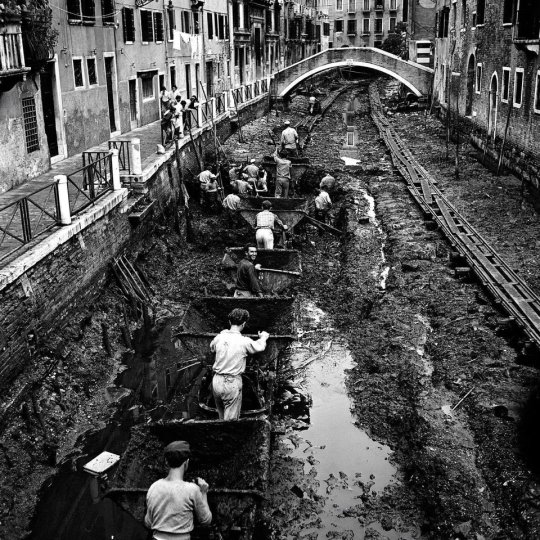
"Svolte di Popolazio," 1956
In 1956, an extraordinary event took place in Venice, Italy, when the famous canals of the city were drained and cleaned for the first time in centuries. This remarkable undertaking was known as the "Svolte di Popolazio," or the People's Revolution, and it was a massive civic project aimed at improving the sanitation and infrastructure of Venice's historic waterways.
Over the centuries, the canals of Venice had accumulated layers of silt, debris, and waste, leading to unsanitary conditions and posing a threat to the city's architectural heritage. The decision to drain and clean the canals was made in an effort to address these issues, restore the waterways to their former glory, and preserve Venice's unique cultural and historical identity.
The draining and cleaning of the canals required meticulous planning, coordination, and labor-intensive work by a team of engineers, workers, and volunteers. Water was pumped out of the canals, revealing the muddy bottom and hidden treasures beneath the surface, such as lost artifacts, sunken boats, and centuries-old structures.
As the canals were emptied, the cleanup crews set to work removing tons of sediment, debris, and rubbish that had accumulated over the years. The process involved dredging, scrubbing, and excavating the canals to remove the layers of detritus and restore the waterways to their original depth and clarity.
The draining and cleaning of the canals was a monumental effort that captured the attention and admiration of Venetians and visitors alike. The project not only improved the sanitation and aesthetic appeal of the canals but also highlighted the importance of preserving Venice's unique heritage and architectural marvels for future generations to enjoy.
The event symbolized a sense of civic pride, community effort, and commitment to the preservation of Venice's cultural legacy. The draining and cleaning of the canals in 1956 remain a historic moment in the city's history, showcasing the resilience, ingenuity, and enduring beauty of Venice's iconic waterways.
#art#photography#black and white#vintage photography#still life photography#history#italy#venice#cleaning#draining#canal#heritage#civic act#legacy#1956#waterways
66 notes
·
View notes
Text
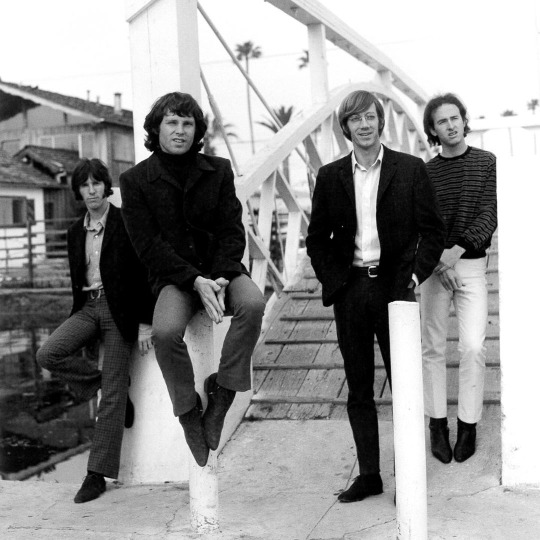
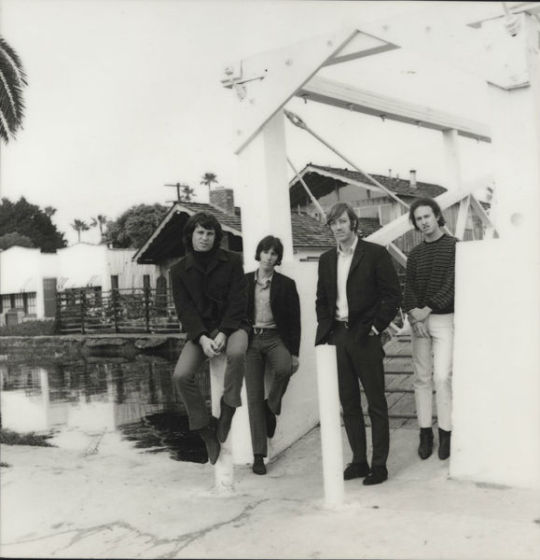
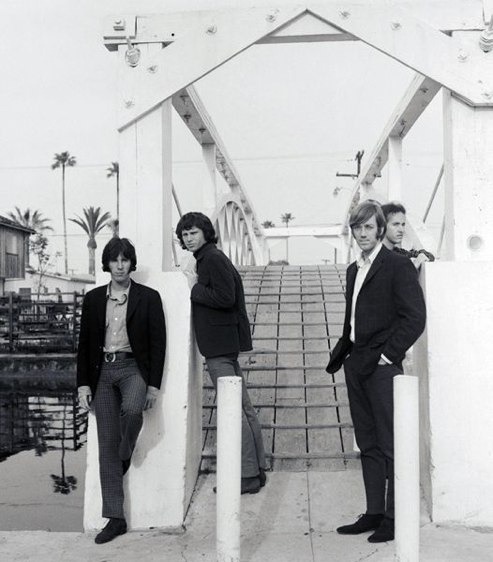
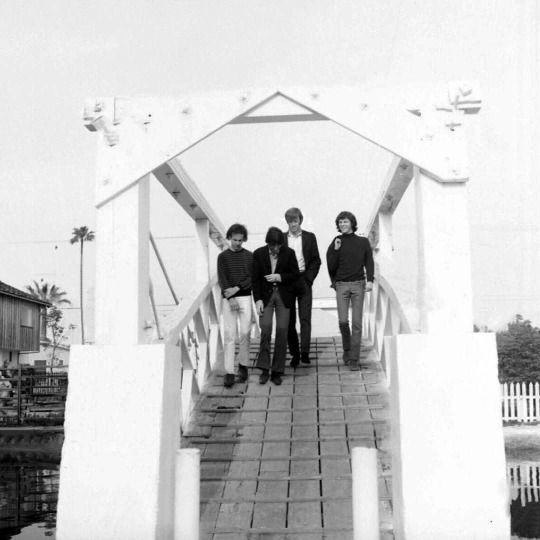



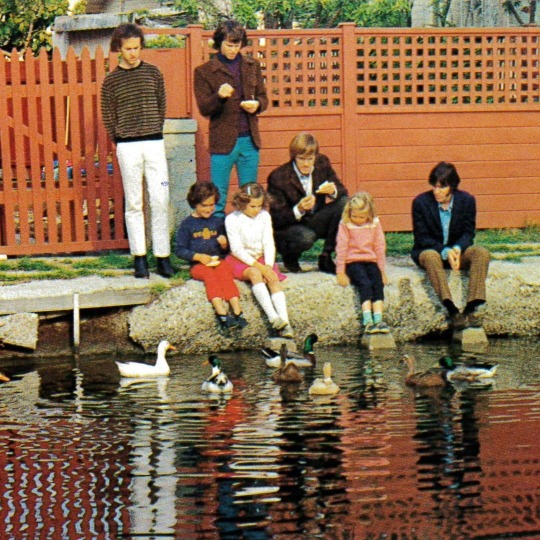
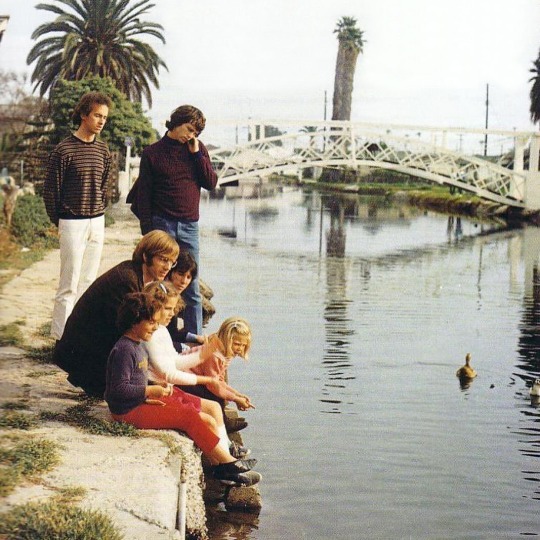
Photographer Bobby Klein talks about this photo shoot: “We arrived in Venice in the morning and walked along the canals. This bridge has been preserved in its original form in Venice, which was designed in the early 1900s. On the way there, in my car, the guys heard ”Break On Through" on the radio for the first time," and everyone was delighted. They understood what it was like to have a hit. " January-February 1967, Venice Beach, California. © Bobby Klein.
32 notes
·
View notes
Text
WHAT HAPPENED TO COUNTESS MARIA OF SALONA?
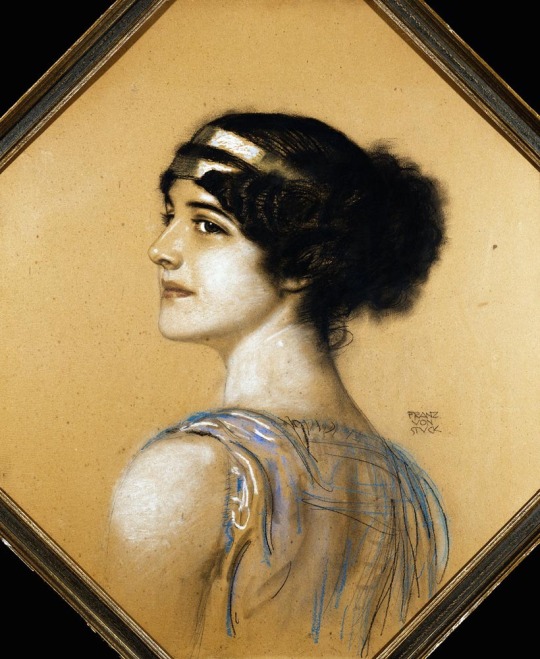
Maria Fadrique was born around 1370, the daughter of the last Catalan Count of Salona, Don Louis Fadrique, and his Greek wife, Princess Helena Fadrique, also known as Helena Kantakouzene or The Despina, Helena Asenina.
Not much information about her early childhood has been preserved. We do know that she grew up as an only child to the noble couple and was likely prepared and claimed as the only heir to the County of Salona.
In 1382, at the age of 12, she succeeded her father and became the Countess of Salona in her own right. However, due to her age, she was deemed too young to manage the county, so her mother, the Dowager Countess Helena Fadrique, took charge as regent. That same year, she was betrothed to Bernat Hug, a son of Felip Dalmau, but the betrothal was annulled.
Despite reaching the age of maturity in 1386, at 16, an age when she was now deemed fully capable of managing the County of Salona, her mother remained in power over all state affairs, and Maria had yet to step a toe into the world of politics. That same year, her mother betrothed her to a son of the Serbian Emperor Symeon Uros for political reasons, but this betrothal, like the first one was annulled. That same year, she was betrothed to an alienated associate of the King of Aragon, but the wedding never took place.
From the years of 1388-1391, Helena refused to repay damages to a Venetian citizen who suffered the loss of property aboard a ship from Ancona by her late husband, Don Luis Fadrique, in 1380. This made her mother very unpopular with Venice.
Her mother was quite hated by the people, who most likely would have preferred Maria to take charge over state affairs, but this never happened. Even at the age of 20, Maria had not taken charge over state affairs. This decision to keep the Dowager Countess in charge would eventually cause their deaths.
Though Necdet Sakaoğlu in his work “Bu Mülkün Kadın Sultanları” claims she was betrothed to Manuel II in 1393, I have not seen another source to confirm this claim.
In this same work, Sakaoğlu tells the story of the capture of Maria and her mother in late 1393 or early 1394. “Turkish soldiers captured the Frankish ship that was bringing Maria to Istanbul in the Dardanelles and captured its occupants.” - Necdet Sakaoğlu, “Bu Mülkün Kadın Sultanları,” pg 88.
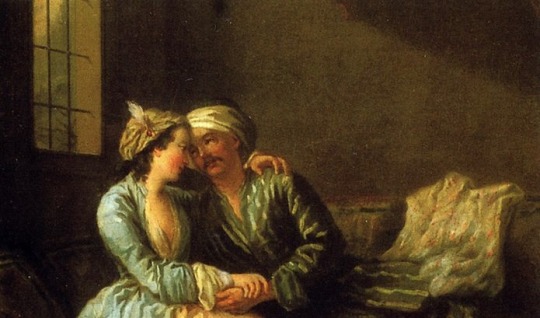
Upon meeting the beautiful and affianced Countess, Sultan Yildirim Bayezid Han was smitten with her, and both the mother and the daughter were brought to his harem in Edirne, and Maria became his concubine, yet in other accounts he actually married her.
The Italian pilgrim Nicholas of Martoni, returning from Jerusalem by way of Greece in 1395, crossed the Gulf of Corinth from Vostitza (Aigion) to Vitrinitza in April. He was told that the district of Vitrinitza was then held by "the Grand Turk" who had acquired it from the lord of Salona ("Dominici de Sola") whose only daughter he had married. The Byzantine Family of Kantakouzenos (Cantacuzenus) Ca. 1100-1460: A Genealogical and Prosopographical, pg 163.
That same year in 1394, Helena died, but it is not clear if it was due to an execution or other reasons. According to Laonikos Chalkokondyles, the Countess Helena disgraced herself and brought shame upon the people of "Delphi" by committing her authority into the hands of her lover, a priest called Strateus, for which reason the Archbishop of Larissa denounced her to the Basileus (Sultan) and gave him the pretext for taking over the County of Salona. - The Byzantine Family of Kantakouzenos (Cantacuzenus) Ca. 1100-1460: A Genealogical and Prosopographical, pg 161.
As for Maria, she was executed a year later in 1395 after Bayezid allegedly found her unworthy of him, and eventually lost interest in her. However, this reason seems highly improbable.
When Bayezid lost interest in her, he wouldn’t have executed her but instead discarded her or even sent her away to the old palace in Bursa. The reason for her execution must be something else, either she was executed for political reasons or she went against the rules or even committed a crime, or even struck his ego in the wrong place. Nonetheless, it is highly unlikely for a Sultan to execute a concubine/wife of his because he lost interest in her.
( Sources: The Byzantine Family of Kantakouzenos (Cantacuzenus) Ca. 1100-1460: A Genealogical and Prosopographical, Necdet Sakaoğlu, “Bu Mülkün Kadın Sultanları".)
#Yildirim Bayezid#Countess Maria#Maria of Salona#Countess Maria of Salona#Helena Fadrique#ottoman empire#County of Salona#Aragon#Count Louis Fadrique#history#Helena Kantakouzene#Helena Asenina#WHAT HAPPENED TO COUNTESS MARIA OF SALONA?
91 notes
·
View notes
Note
Hi!! Its been a while,,,
I’d like to throw in Big Billy, who finally moved out of Hawkins back to home, who works as a surf instructor in Cali, the whole shebang-
Long, curly, sunbleached hair ☀️
Golden tan with the cutest freckles 🌊
Stacked up muscles covered in sand 💛
Steve is a tired, overworked business man who just got transferred to Cali and while hes on the beach strolling along? Who does he see? Why nothing but a MASSIVE Adonis of a man sipping on a fosters- but *gasp* Billy???
Got Steve fainting like a southern belle, right into those massive arms 🤤
<3 It has been a while! I adore this.

The sky is peach. No. Steve just has his eyes closed.
He cracks one and groans.
"Whoa there, Harrington," Billy grins, that same old gorgeous grin. He's gotten bigger, or maybe he's just so close. "Overheated in that suit of yours."
Steve covered his eyes, "Is it really you?"
"Don't cream your slacks," Billy snaps his gum, "Come on. Let me get you in the shade."
Steve allows himself to be half dragged half carried, not sure which is more manly. Well, he just fainted, so he didn't know what he was trying to preserve by holding onto any dignity.
"There you go," Billy's practically manhandling him, and that shouldn't be so hot. The dune does feel cool, as does Billy's hand on his forehead. Billy strips him of his jacket with sure hands, his long hair just brushing over the back of Steve's hand in a whisper fine kiss. He was so big he was blocking out the sun, shoulders as wide as...
God.
"How are you here right now?"
"I live just down the beach," Billy says, tipping his chin up towards the Venice side of the beach. The wild side.
"No, how are you here, in California. Max said you skipped town for Chicago," Steve said.
Billy grinned, "A clever ruse."
Steve just swallowed, watching Billy tug off his necktie. He wished Billy would just... pull.
"You live nearby?" He whispered. His mouth felt dry. Billy was wet. Glistening. Hung with the ocean like it was his regalia.
Billy's eyes flashed up to Steve's, and then down to his own scarred hands.
"Yeah," Billy just slid the knot of silk from between his fingers. "Harrington."
"Hargrove," Steve said.
"You got heat stroke or something?" Billy licks his lips. They probably taste like the ocean.
"Wanna go talk?" Steve says.
Billy blinks at him. Dolly blue eyes still.
"Yeah, Harrington. You know how I love to talk," Billy said after a still moment.
They almost left a silk tie in the sand. Steve went back to retrieve it.
62 notes
·
View notes
Text

Harvest and Trade Metropolises of the 14th Century 🍂🍁✨
A Melting Pot of Cultures and Hidden Romances
The 14th century was a time of transformation, as Europe flourished and became a hub of trade and cultural exchange. Cities like Venice, Genoa, and Florence evolved into powerful trade metropolises, as did northern cities such as Bruges, Lübeck, and Cologne, where merchants from all over the world gathered to exchange goods, knowledge, and stories. These bustling centers, especially during autumn markets that celebrated the harvest season, were filled with stalls showcasing exotic fabrics, precious spices, and rare treasures, creating a scene of constant activity and adventure.
Yet behind the commerce and economic hustle lay deeper, more human stories. Merchants from different regions and cultures met in these cities not only as business partners but as people who shared the joys and challenges of life. Their journeys were long and perilous, and arriving in a new city was often met with relief and a celebration of life. It’s easy to imagine that in these moments of pause and festivity, connections were formed that went beyond mere trade.
Michael Rocke's work "Forbidden Friendships: Homosexuality and Male Culture in Renaissance Florence" (1996) compellingly highlights how close friendships and connections between men developed in Florence and other trade cities. Rocke describes how the complex social structure of the Renaissance allowed men to maintain intimate and often emotional relationships that surpassed business interests. In some cases, these connections have been preserved in archives through letters and private records, suggesting that such relationships were sometimes romantic in nature. The intertwining of trade and personal life provided space for deeper bonds that may have been perceived as mere partnerships in public but held greater meaning in private.
These connections often remained in the shadows of official historical records, but with a closer look, the streets and parks of these cities tell stories of alliances that involved hearts as well as gold.
Text supported by GPT-4o, Claude 3.5 Sonnet Images generated with SDXL, overworked with SD-1.5/SDXL inpainting and composing.
#HistoricalRomance#RenaissanceLove#CulturalExchange#LGBTQHistory#MichaelRocke#gayart#autumnvibes#autumncolors#gayromance#manlovesman#ancienttraders
27 notes
·
View notes
Text
KEOPIHAUS SPRING EVENT 2025

Happy Spring Equinox, visitors and patrons! Kicking off this year, we’ve decided on the Carnival of Venice for the spring seasonal event theme! The Carnival of Venice, also called Carnevale di Venezia in Italian, is an annual festival held in Venice, Italy. It is famous throughout the world for its elaborate costumes and masks. The Carnival ends on Shrove Tuesday (Martedi Grasso or Mardi Gras), which is the day before the start of Lent on Ash Wednesday. The Carnival traces its origins to the Middle Ages. It has existed for several centuries until it was abolished in 1797 after the fall of the Republic of Venice. Carnival was reestablished by the Italian government in 1979 and now attracts nearly 3 million visitors annually.
See event details under the cut!

For this event, a masquerade is in effect! Pick one of the six following well known mask types that are popular during Carnevale and use the associated prompt in your work!
Bauta/bautta → bauta or bautta masks were used to preserve one’s anonymity without sacrificing their ability to eat or talk due to the mask not being fitted along the jawline. This mask’s prompt is hidden. Use easter eggs or shadows in your work
Colombina → this half mask was popular with women and is commonly used in modern times. It only covers half the wearer’s face. The prompt for this mask is duality. Use the duality between one’s personality or the duality between femininity and masculinity in your work.
Moretta/servetta muta → this mask was primarily worn by patrician women. It was worn by biting down on a button or bit rendering the wearer unable to speak, hence the term muta. The prompt associated with this mask is muted. Whether it be muted as in wordless communication or muted colors, use these in your work.
Volto/larva → volto (face) or larva (ghost) masks are the most iconic and well known of Venetian masks. These masks are tightly fitted which do not allow the wearer to eat. This mask is paired with the prompt iconic. Use an iconic look or era or set your work in an idolverse.
Pantalone → the pantalone mask is a classic character from the Italian stage. It is usually represented as a sad old man with an oversized nose like the beak of a crow. The prompt for this mask is bird-like. Include birds or bird symbolism in your work.
Arlecchino → the final mask, the arlecchino or Harlequin, is a Zanni character of the commedia. He is meant to be a type of “noble savage”, devoid of reason and full of emotion. He may be a peasant, a servant, or even a slave. The mask is a half one usually depicted with a short, wide nose, a set of wide, round, arching eyebrows, a rounded beard, and always a “bump” on the forehead which is meant to signify a devil’s horn. The prompt for this final mask is monster/demon/alien/etc. Idol. Make the idol in your work non-human.
Rules
Rules for this event are as follows: 🎊 Must include the meaning of one of the prompts in your work. Please note, these cannot be exchanged and you cannot make up your own. The prompts are up for interpretation. Just be sure to include the prompt you used in the details preceding your fic or graphics. 🎊 Deadline for submission is June 20th @ 11 PM AKST (Alaska Standard Time) 🎊 Writers must meet the minimum word count of 500 words. 🎊Use the official event tag #kh spring event 25 🎊Regular network rules apply.

12 notes
·
View notes